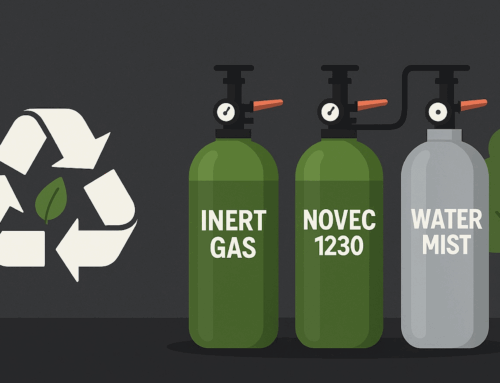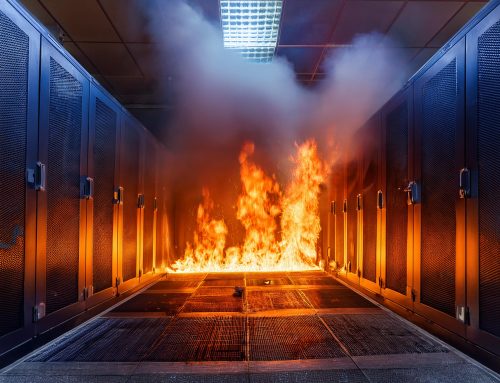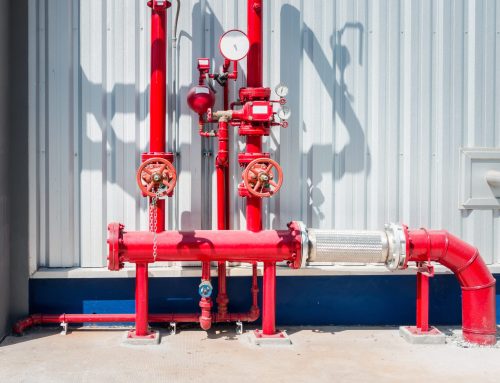Ensuring the safety of your business premises is paramount, and one critical component of this is the maintenance and inspection of your building’s fire sprinkler systems. Understanding when to schedule these inspections, what they entail, and how to prepare, can save time, money, and, most importantly, lives. This comprehensive guide for business owners aims to provide helpful information on the best practices for scheduling and managing fire sprinkler inspections.
Understanding Inspection Requirements
Fire sprinkler inspections are not only a good practice, but often legally mandated per local and national fire and building codes. The frequency and type of inspections can vary based on local regulations, industry standards, the specific requirements of your sprinkler system, and more. Generally speaking, inspections are guided by standards set by the National Fire Protection Association (NFPA), particularly NFPA 25, which outlines the inspection, testing, and maintenance of water-based fire protection systems (i.e. fire sprinkler systems).
While variations exist, a typical fire sprinkler system inspection schedule will typically include:
- Monthly: Visual inspections of sprinkler heads, gauges, and control valves to ensure they are in proper working order and unobstructed.
- Quarterly: Checks on alarm devices, control valves, and water flow switches.
- Annual: A comprehensive inspection including the testing of all system components.
- Every 5 Years: Internal pipe inspections for signs of corrosion, blockages, or other impairments.
- Every 10 Years: Testing or replacing sprinkler heads in certain environments, such as high temperatures or corrosive atmospheres.
Choosing the Right Time for Inspections
Selecting the optimal time for these inspections can be helpful in minimizing disruptions to your business operations and ensure compliance without too much hassle. When choosing the best time for your fire sprinkler system inspections, consider factors such as the time of the year, regulatory deadlines, and peak business hours. Once you choose an ideal time, your fire protection company can then track those required inspections for you so that you don’t miss an inspection, and so that inspections fall within an appropriate time given your business’ unique schedule and needs.
Considerations for timing:
- Business hours vs. after hours: If your business operates during standard hours, scheduling inspections during off-peak times or after hours can prevent interruptions. For businesses with non-standard hours, inspections during low-traffic times can be ideal.
- Seasonal factors: Certain seasons might be busier for your business. Scheduling inspections during slower periods can minimize operational disruptions.
- Compliance deadlines: Align your inspection schedule with regulatory deadlines to avoid last-minute rushes and potential penalties.
- System usage and conditions: High-usage times or specific conditions (like higher occupancy during events) might necessitate more frequent checks. Conversely, low-usage periods might be ideal for more extensive inspections.
What to Expect During an Inspection
Understanding what happens during a fire sprinkler inspection can help you to better prepare for the visit and ensure a smooth process for both you and the technician while on-site. Most fire protection companies will give you a call before arriving to make sure you know who to expect and when. If you are a business that requires security codes upon entry or special access to key areas around the building, it’s helpful to have a designated employee who can meet the tech upon arrival and provide them with building access as needed.
To better prepare, consider these common fire sprinkler system inspection procedures:
- Visual inspection: Inspectors will check all visible components for signs of wear, damage, or obstruction. This includes sprinkler heads, piping, and control valves.
- Operational testing: Components such as alarms, control valves, and water flow switches will be tested to ensure they are functioning correctly.
- Internal inspection: For periodic comprehensive inspections, internal components may be checked for corrosion, blockages, and other impairments.
- Compliance verification: Inspectors will ensure your system meets all local and national fire safety codes.
Inspectors should provide you with a detailed findings report highlighting any deficiencies and recommending necessary repairs or maintenance. Keep these reports for your records and ask that your fire protection company also maintains records for you. Once you have the report, address any deficiencies or necessary repairs promptly to maintain system integrity and compliance.
Preparing for an Inspection
Preparation for a fire sprinkler system inspection can significantly streamline the inspection process. Here are key steps to take:
Pre-Inspection checklist:
- Documentation: Ensure all previous inspection reports, maintenance records, and system documentation are readily available.
- Access: Provide clear access to all areas where sprinkler components are located. This might involve moving furniture or clearing storage areas.
- Communication: Inform staff about the inspection schedule to avoid surprises. This is particularly important if any operational disruptions are anticipated.
- Maintenance review: Conduct a preliminary check of the system to identify and address obvious issues, such as obstructed sprinkler heads or visible damage to piping.
After the Inspection
Post-inspection, review the inspector’s report carefully and ask any questions you might have. Prioritize any recommended repairs or maintenance tasks to ensure your system remains in optimal condition. Maintaining an organized record of inspections and repairs is also important for ongoing compliance and efficient future inspections. If fire code violations are found during the inspection, such as blocked sprinkler heads for example, address these violations as soon as possible to avoid further issues.
Fire Systems, Inc.
Scheduling fire sprinkler inspections is a critical aspect of business safety and compliance. By understanding the inspection requirements, choosing optimal times, and preparing adequately, business owners can ensure a smooth process that minimally disrupts operations. Regular, well-timed inspections not only help in meeting regulatory obligations but also provide peace of mind that your fire safety systems are functioning correctly and effectively.
Remember, proactive maintenance and timely inspections are key to safeguarding your business, employees, and customers from the devastating effects of fire. Ensure your fire sprinkler system is always in top shape. Regular inspections are crucial for safety and compliance. Contact Fire Systems, Inc. today at 770-333-7979 to schedule your next inspection, and visit our website to learn more about all we have to offer as an all-services fire protection company. Let our experts help protect your property and give you peace of mind!







